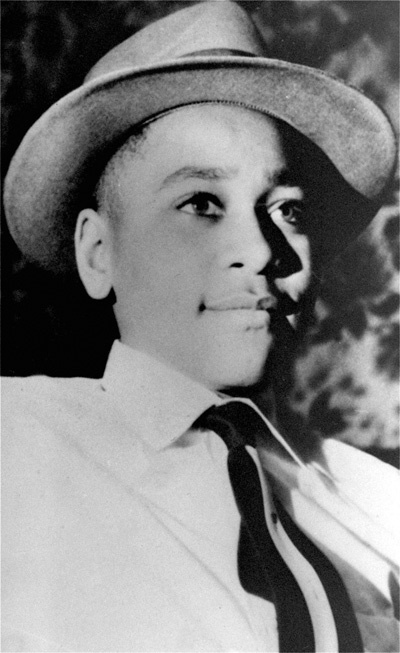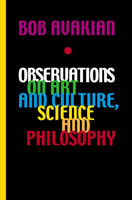On the Controversy Over a Painting of Emmett Till: "Open Casket"
Should Oppression Be Owned, Or Abolished? OR
Did a White Person Have the “Right” To Write Strange Fruit?
March 27, 2017 | Revolution Newspaper | revcom.us
by Toby O’Ryan
Emmett Till, 1941-1955

This past week a protest against a painting evoking the lynching of Emmett Till has been going on, making the front page of the arts section in the New York Times and other liberal publications, and featured in a different way in the reactionary tabloid New York Post.
As background: Emmett Till, a 14-year-old Black child, was beaten and lynched, and disfigured almost beyond recognition, in Mississippi in 1954. His killers were set free by an all-white jury after a trial lasting less than two hours. When Emmett Till’s body was brought back to Chicago, his mother—Mamie Till-Mobley—courageously insisted on an open-casket funeral so the world could see the level of brutality and horror that had been inflicted on her son. The lynching, the open-casket funeral, and the display of the photographs of Emmett Till’s body in the Chicago Defender and Jet magazine became a seminal moment in U.S.—and indeed, world—history, seared on the consciousness of Black people in particular and on anyone and everyone who had any feeling for justice and humanity in particular.
A white artist, Dana Schutz, recently made a painting of this, and entered it into the Whitney Biennial, a major art show in New York. Schutz and her painting have come under attack by two Black artists. Parker Bright, sometimes along with others, has stood in front of the painting, partially blocking its view. Hannah Black has written to the biennial’s curators urging that the painting be removed and has said it should be destroyed. While there is a question of how institutions continue to marginalize and suppress art from oppressed peoples (as well as art that in other ways goes against the status quo), this is not at the heart of what is being protested here.
Both artists object that Schutz herself has no right to paint this subject and, in Bright’s words, that she perpetuates “the same kind of violence that was enacted” on Emmett Till. “I feel like she does not have the privilege to speak for Black people as a whole or for Emmett Till’s family,” Parker Bright said. Hannah Black wrote that “The subject matter is not Schutz’s. White free speech and white creative freedom have been founded on the constraint of others and are not natural rights.” She accuses Schutz of “transmuting Black pain into fun and profit.” Schutz herself, in an interview in ARTnews, said that she did the painting in response to the police shootings, protests, and reaction in the summer of 2016, feeling that she had to speak, and that she was struck by how Mamie Till-Mobley had made what was hidden visible.
I haven’t seen the painting. I don’t know if it does justice to the deep subject matter that it’s tackling. But the objection of the protesters goes beyond the merits of the particular work of art and implies, if not insists, that the artist herself, by virtue of her social position, should not even attempt to take up the subject.
I will say this: whatever the intentions of Bright, Black, and others, the rationale for and the outlook behind this protest will keep us in the world as it is. And that we cannot afford.
First, on the criterion for who can do what art. The criterion of any work of art on a subject like the horrific murder of Emmett Till is not the lived experience of the artist, but whether the work does justice to the subject matter. Does it reach into the viewer, reader, or listener in a way that gets them closer to the truth of the matter being portrayed? Does it raise important questions in people’s minds? In the broadest sense, does the work provoke the audience to look at and think about the people and/or the issues it portrays in ways that correspond more to the essential truth of its subject matter? Does it lead people to see more deeply, to feel more deeply, the horror of injustice? Does it condemn what must be condemned and extol what should be extolled? Does it overall serve to propel the struggle against that oppression forward or not? What in the broadest terms is its social effect?
The question of the artist’s intent also enters into the equation. Were they trying to do something to contribute, broadly speaking, to a world without such horrors, to a world where humanity can flourish, and in making that attempt fell short, or even went badly off track? Then they should be criticized, but that should be tempered with some sense of what they were trying to do, even if they went off. But the main thing is the effect: how does the art “work on” the people who see it?
You want to criticize the work? Fine, go ahead. But do it on the basis of its content and social effect, not whether the artist has “the privilege” to speak for a community. While thinking about this letter today, I was listening to Rhiannon Giddens’ new album Freedom Highway. I thought about her powerful version of Richard Fariña’s song about the bombing of the 16th Street Baptist Church in Birmingham, Alabama, in 1963 in which four young girls were murdered. Listen to this on YouTube right now and tell me if Fariña should have held back from writing this song because he was not Black. He, along with millions around the world, was shaken to his core by the bombing and he created art that can still today move people and shake them, that can peel away the callouses and put them in touch with the humanity of the victims and the inhumanity of their murderers, and that can compel them to look around in new ways at what still goes on. Should Abel Meeropol, a white person from New York City, not have written “Strange Fruit”—the classic song about lynching that has been so compellingly interpreted by Billie Holiday, Nina Simone, and so many other artists? Should not others still sing this?
Or what about Picasso? He was living comfortably in Paris when he painted Guernica, which portrayed the unutterably vicious bombing carried out by the Nazis against a Basque peasant village on the antifascist side in the Spanish Civil War. He didn’t personally know what it was like to have your family slaughtered in front of your eyes by bombs falling from the sky. Does that matter in the least to the enduring power of that painting?
 Bob Avakian: Observations on Art and Culture, Science and Philosophy
Bob Avakian: Observations on Art and Culture, Science and Philosophy
"If you don’t have a poetic spirit – or at least a poetic side – it is very dangerous for you to lead a Marxist movement or be the leader of a socialist state." – Bob Avakian
This provocative collection of reflections and observations by Bob Avakian on art, culture, science and philosophy offers a rare treat. Excerpted from formal talks as well as more informal discussions and conversations, many of the texts in this collection allow the reader to experience firsthand the freewheeling Bob Avakian—in the process of developing his thinking and reenvisioning the communist project on a wide range of controversies, from the dictatorship of the proletariat to discussions of truth, beauty, science and imagination.
$14.95
Order online at insight-press.com
The critics of Dana Schutz’s painting seem to assume that only artists of a particular nationality or gender or sexual identity or condition have the right (or the “privilege,” to use their word) to take up subject matter pertaining to that nationality, gender, sexual identity, or condition. The logic of this outlook treats oppression as property and ultimately (and sometimes not so ultimately) reduces things to the cash nexus of who gets to “monetize” that oppression into art. Haven’t we had enough, more than enough, of this frankly rank thinking? Don’t the commodity relations of capitalism already do enough to mar and twist everything they touch? Do you really want to stay in this world where everything is commodified—the world that among other things led to and produced the excruciating nightmare that went down in August 1954 in Money, Mississippi—or do you want to get out of it, get free of it, forever? How about fighting to get beyond that world (and as we do, fighting to break down the barriers that keep some artists “on the margins,” and in some cases suppressed outright). One outlook, or the other. The world we have, or the world we could have, beyond the narrow horizon of capitalism and the reduction of everything to commodity exchange.
Second, if you think for just one second about what humanity faces right now... really? Mr. Bright and Ms. Black, have you noticed that there is a fascist in the White House who is determined to “make America white again” and who is putting the future of the entire planet in severe jeopardy? And if you have noticed that, and are revulsed by it—and from reading Hannah Black’s statement, I’ll assume that you are—then why in the world are you aiming your wrath at someone who seems to be trying to go against that direction, for daring to create a painting whose intent seems to be to get people to stop and think about and reflect on and feel the horror visited upon Emmett Till and Mamie Till-Mobley? And you’re accusing her of the “same kind of violence enacted” by the lynch mob who murdered Emmett Till? Again, really? This is what you think needs to be protested right now? Even destroyed? Are you even thinking about the effect of your actions? Or wondering why the press is suddenly so eager to hear and publicize your thoughts? This would be pitiful if it weren’t so damaging to what is really needed right now.
Come on, now. It’s way too late for this stuff. It does damage, it needs to stop, and the people who know better need to stop putting up with it and start calling it out for what it is.
Volunteers Needed... for revcom.us and Revolution
If you like this article, subscribe, donate to and sustain Revolution newspaper.
